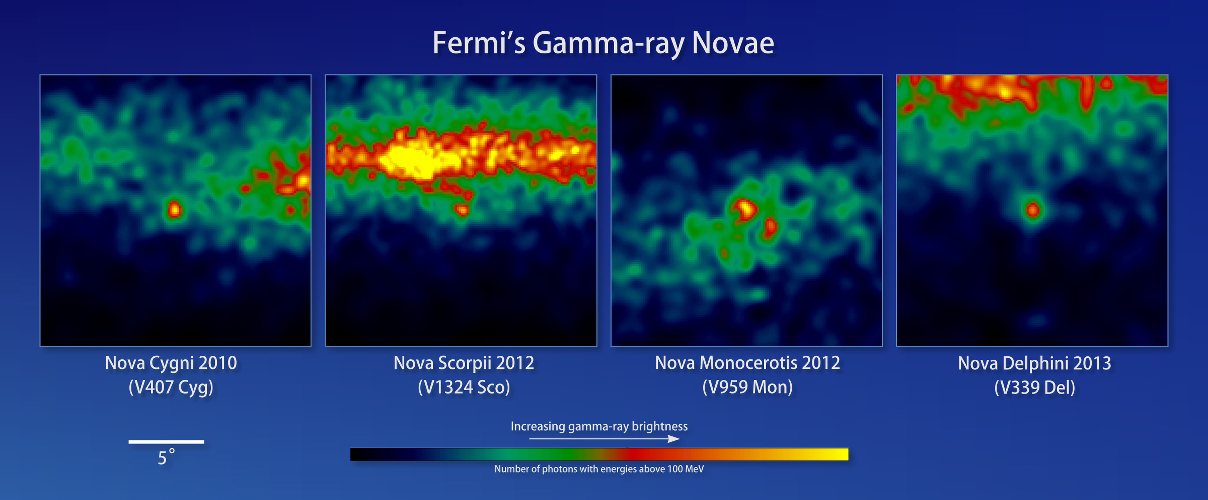
 Credit: NASA/DOE/Fermi LAT Collaboration
Credit: NASA/DOE/Fermi LAT Collaboration
"New Stars" Seen in New Way
Novae, or "new stars", are actually old binary stars. A nova occurs when a normal companion star dumps hydrogen-rich material onto a white dwarf companion. A white dwarf is the old, burnt-out cinder of a star similar to the sun, left behind after the star runs out of nuclear fuel in its core, and after the star has lost its outer layers. White dwarfs are tiny, about the size of the earth, and incredibly dense - one teaspoon-full of a white dwarf would weigh as much as a car. When enough of the companion star's material falls onto the white dwarf, thermonuclear fusion of the accreted material can begin on the surface of the white dwarf, transmuting hydrogen into helium, and causing a sudden outpouring of radiation. This outburst can produce up to 100,000 times the energy our Sun produces in an entire year. Unlike supernovae, a more extreme type of explosion which results from the complete destruction of a star, novae can recur. Novae have been studied from the radio to the X-ray band of the electromagnetic spectrum, but the upper energy limit to their emission is not known. Now the Large Area Telescope on the Fermi Gamma-ray Space Telescope has, for the first time, confirmed the emission of high-energy Gamma-rays from four classical novae. The LAT images of these four sources in outburst are shown above. The origin of this high energy emission is currently not known. Astronomers suspect that this emission may be related to powerful shocks created in the blast. Such shocks could accelerate sub-atomic particles to extraordinarily high energies and produce Gamma-rays, a process first described by Enrico Fermi, the great physicist for whom the Fermi Space Telescope is named.
Published: August 25, 2014
<
HEA Dictionary ● Archive
● Search HEAPOW
● Other Languages
● HEAPOW on Facebook
● Download all Images
● Education ● HEAD
>

Each week the HEASARC
brings you new, exciting and beautiful images from X-ray and Gamma ray
astronomy. Check back each week and be sure to check out the HEAPOW archive!
Page Author: Dr. Michael F. Corcoran
Last modified Tuesday, 27-Feb-2024 10:15:17 EST


